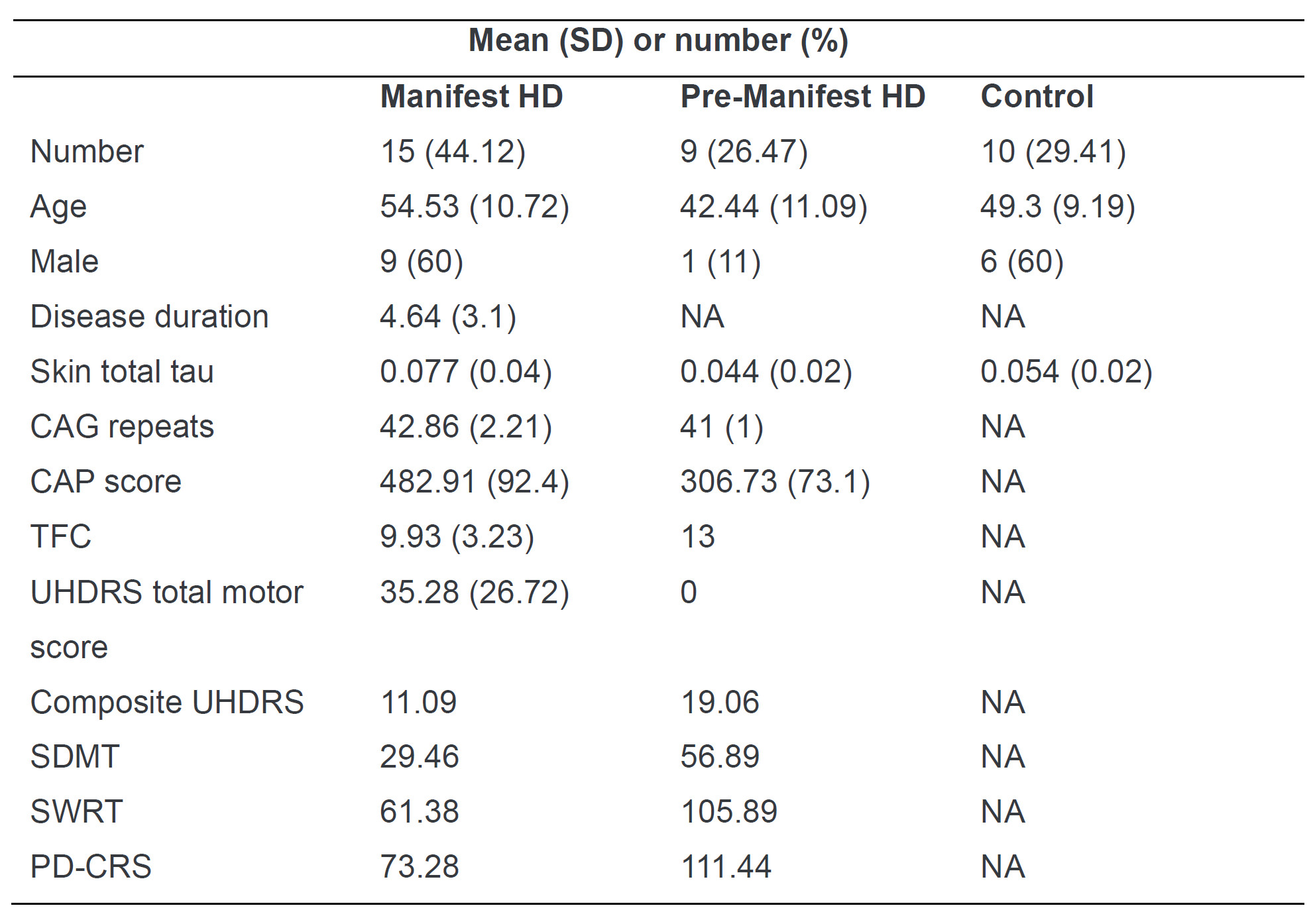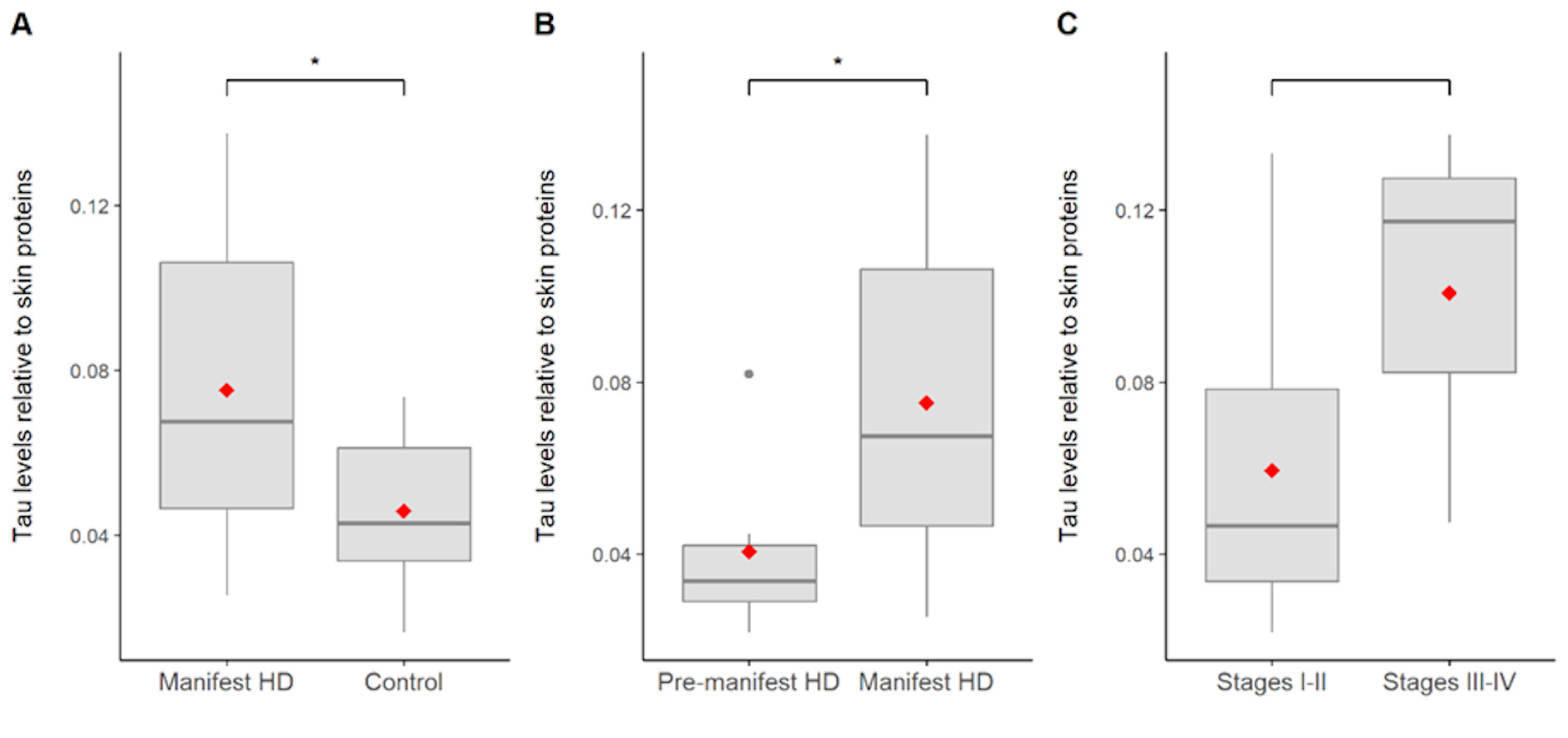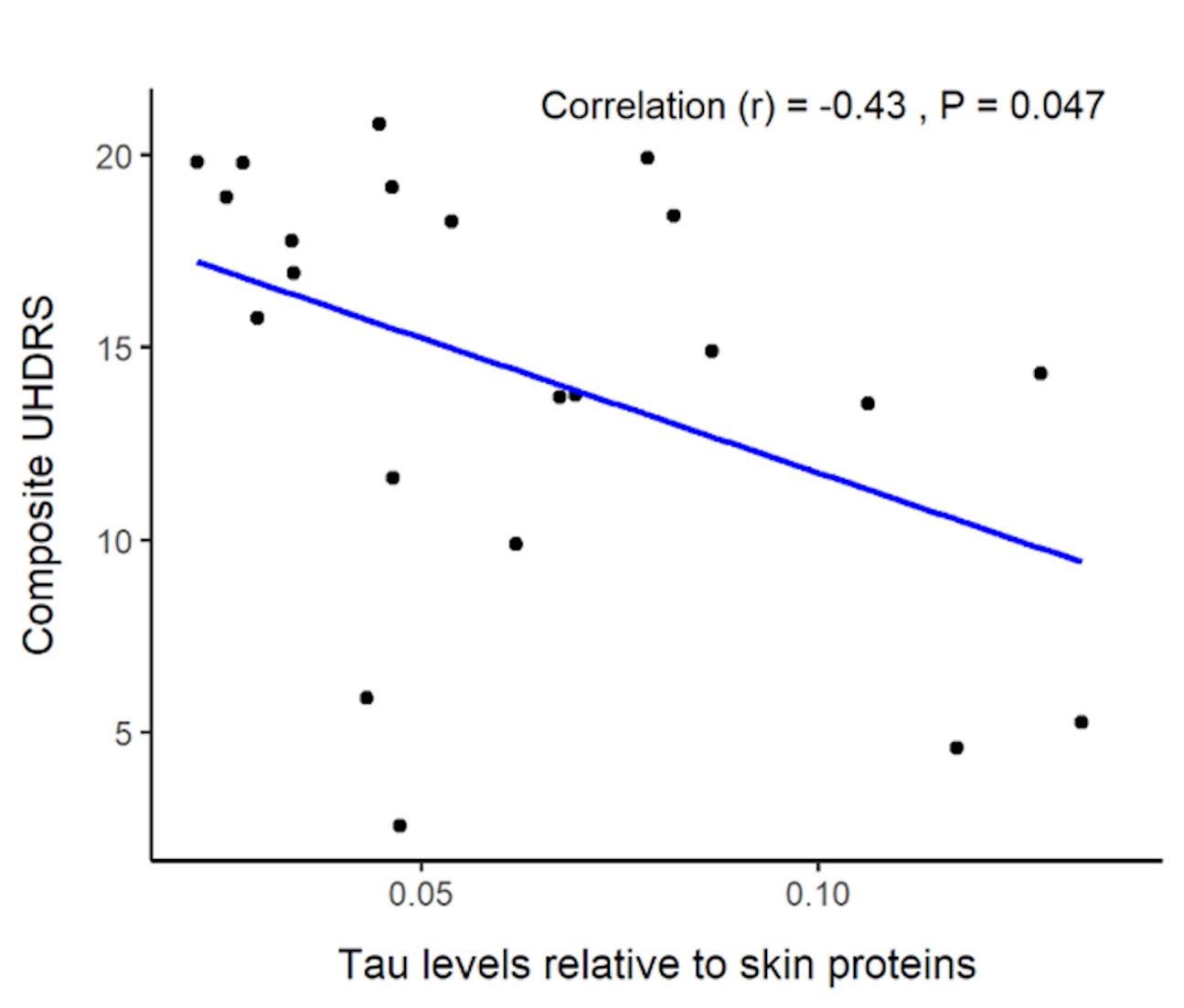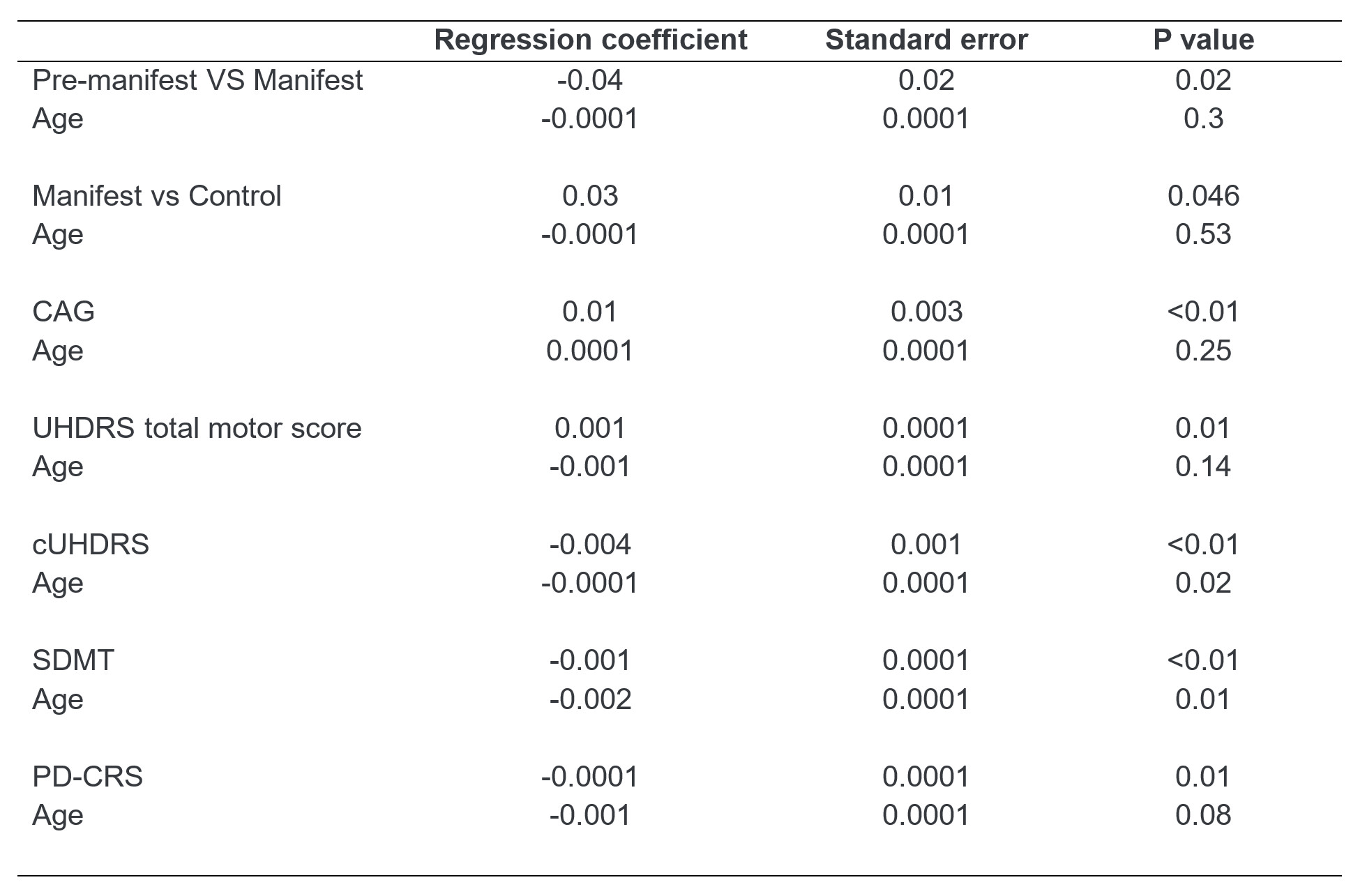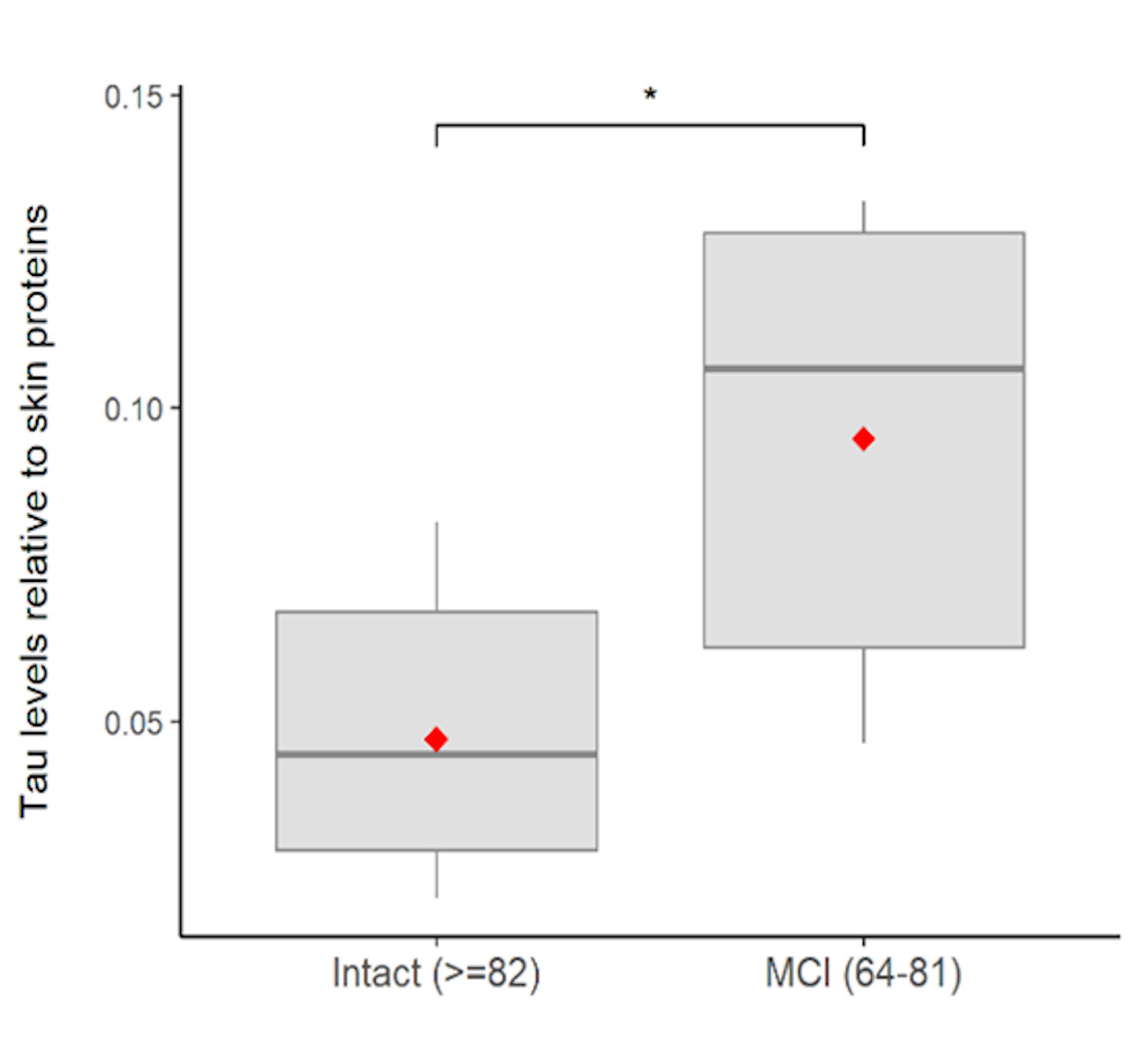Category: Huntington's Disease
Objective: To explore skin tau quantification as a potential biomarker for disease severity, motor and cognitive function in Huntington’s disease
Background: Beyond the aggregation of mutant huntingtin, recent research has revealed aberrant tau accumulation in the brains of individuals with Huntington’s disease (HD), implicating tau protein dysregulation as a potential contributor in the disease’s pathogenesis. Tau related pathology, with a notable emphasis on 4R tau isoforms, has been linked to HD progression and cognitive decline. While tau protein levels have been studied in CSF and plasma of HD patients, recent findings in primary 4R tauopathies have highlighted the potential of tau detection in the skin as a promising biomarker. Thus, this study aims to explore skin tau levels in secondary tauopathies such as HD for the first time.
Method: Skin biopsies were obtained from 24 consecutive HD gene-mutation carriers and 10 healthy controls (table 1) at the ankle region and analyzed using ELISA to quantify tau levels, following the protocol described by Vacchi et al, Brain 2022. Total skin tau concentration was normalized to total skin protein levels. Clinical assessments were conducted to evaluate disease severity, motor and cognitive function.
Results: Manifest HD patients showed a significant increased tau protein compared to healthy controls (p = 0.01) and to pre-manifest individuals (p = 0.03). Patients in HD stages I and II, according to total functional capacity, demonstrated a tendency towards lower tau levels, without reaching statistical significance (p = 0.09) (figure 1). A significant correlation was found between tau levels and CAG repeat-length (r = 0.53, p<0.01), CAG-Age-Product (CAP) score (r = 0.46, p = 0.02), UHDRS total motor score (r = 0.45, p = 0.03), and Composite UHDRS score (figure 2). At the cognitive level, significant correlation emerged between tau and assessed scales. Table 2 summarizes the adjustment for age. Skin tau levels allowed the classification of HD patients into cognitively intact and MCI groups based on the PD-CRS scale cutoffs (figure 3).
Conclusion: Quantification of total tau in skin samples may represent a novel biomarker in Huntington’s disease, associated with disease severity, motor function and particularly with cognitive impairment.
Table 1
Figure 1
Figure 2
Table 2
Figure 3
To cite this abstract in AMA style:
I. Ruiz Barrio, A. Vazquez Oliver, A. Puig Davi, E. Rivas Asensio, J. Perez Perez, C. Fernandez Vizuete, A. Horta Barba, G. Olmedo Saura, N. Salvat Rovira, E. Vacchi, G. Melli, J. Pagonabarraga Mora, S. Martinez Horta, J. Kulisevsky. Skin Tau Quantification as a Novel Biomarker in Huntington’s Disease [abstract]. Mov Disord. 2024; 39 (suppl 1). https://www.mdsabstracts.org/abstract/skin-tau-quantification-as-a-novel-biomarker-in-huntingtons-disease/. Accessed October 21, 2025.« Back to 2024 International Congress
MDS Abstracts - https://www.mdsabstracts.org/abstract/skin-tau-quantification-as-a-novel-biomarker-in-huntingtons-disease/

